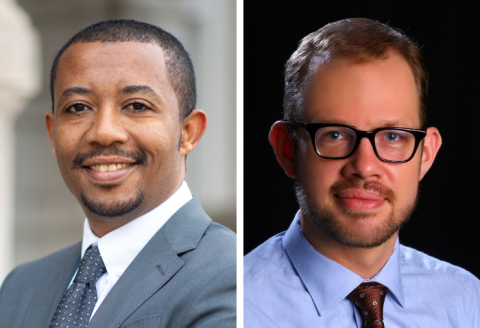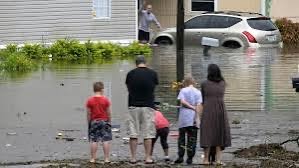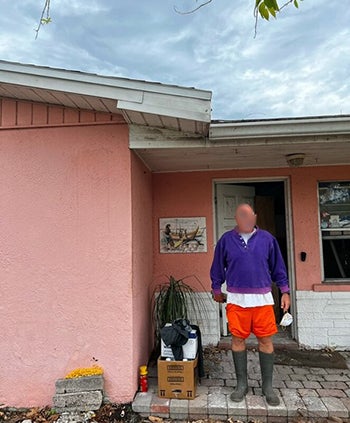Researchers Dive into the Impact of Hurricanes on Florida's Foster Care Youth

In March of 2024, research faculty Dr. Gashaye Tefera, Dr. John Mathias and the Stoops Center for Communities, Families, and Children at the College of Social Work were awarded a Florida Institute for Child Welfare grant, funding a project titled: “Vulnerability and Resilience During a Natural Disaster: Exploring the Experiences of Foster Children in Florida.”
The study recruited individuals who have aged out of Florida’s Foster Care System and child welfare professionals to explore the vulnerability, resilience, and support for foster youth and families during and after hurricanes in Florida. The project used Photovoice, a participatory research method using images and community engagement to allow people to tell their story. The hurricanes of focus for the study included Michael (2018), Isaias (2020), Ian (2022), Idalia (2023), Helene (2024), and Milton (2024).
Recruited individuals who aged out of Florida’s foster care system participated in three focus groups to share images (both real and altered) and narratives related to their experiences during hurricanes. Child welfare professionals participated in one-on-one interviews to share their perspectives and recommendations for supporting those in foster care during natural disasters.
Project Goals
The overarching goal of the research team was to inform policy and practice, leading to more effective support and interventions tailored to the needs of foster children in the context of natural disasters.
What makes this project unique is the use of photos to have participants answer the project’s research questions including:
- How do foster children perceive losses and exhibit resilience during hurricanes?
- What contributing factors may promote resilience among foster children during hurricanes?
- What are the challenges to resilience among foster children during hurricanes?
- How can child welfare practitioners effectively assess and support disaster resilience among the foster children they serve?
The images and experiences shared by project participants offer a close look at how foster youth handle disasters. Participants demonstrated that resilience isn't just about personal strength, but that it is shaped by social, emotional, and systemic factors. By connecting disaster experiences to broader issues like trauma, instability, and neglect, the study challenges the idea that resilience is only about individual toughness. Instead, the project suggests that resilience is something built through relationships and systems, needing cooperation from foster youth, agencies, and the state.

Theme: Trauma Amplification
A Focus Group 1 Participant Stated: “And then you throw in a storm where there again may not have to have a home. It could be that they could be flooded, or they could have to move because even if they are happy and doing well in that particular home, if that home is destroyed now, there is that fear of the unknown. And so now we're triggering all of those other things that may or may not be on the road to healing through whatever services or stability that they have received in that home. And that is assuming that these kids' trauma isn't impacting their ability to maintain a single home that their home can meet their level of care and their level of needs.”
Theme: Gratitude, Hope, and Perspective

A Focus Group 3 Participant stated: “Picture 2 is my dad*. When I finally got in touch with him, I met him at the house the same day I went to the beach. And see this little thing? This has been our childhood home since I was 9, and I'm 31 now. So, there was a hole in the house. In this picture, my dad is beaming with joy and happiness, even though he has just lost everything.”
Theme: Supportive Foster Family and Care Environment

A Focus Group 2 Participant Stated: “I've been through Hurricane Irma, and we were out of power for a good week. But I was surrounded by family. I got placed into foster care, and my uncle took me in. He didn't have to. I was a terrible child, but I'm so grateful for him doing that. He taught me life lessons, so that was good.”
Project Results
The findings of the project offer valuable insights into how foster youth experience, adapt to, and grow from disasters. By using both images and interviews, the research amplifies the participants' voices, utilizing an innovative methodology for conducting disaster research.
Policymakers and service providers are urged to consider these findings and to develop disaster plans that are trauma-informed and responsive to the needs of foster youth.
To learn more about this study, its takeaways, and ways you can support foster youth during natural disasters, contact Dr. Gashaye Tefera at gtefera@fsu.edu.

